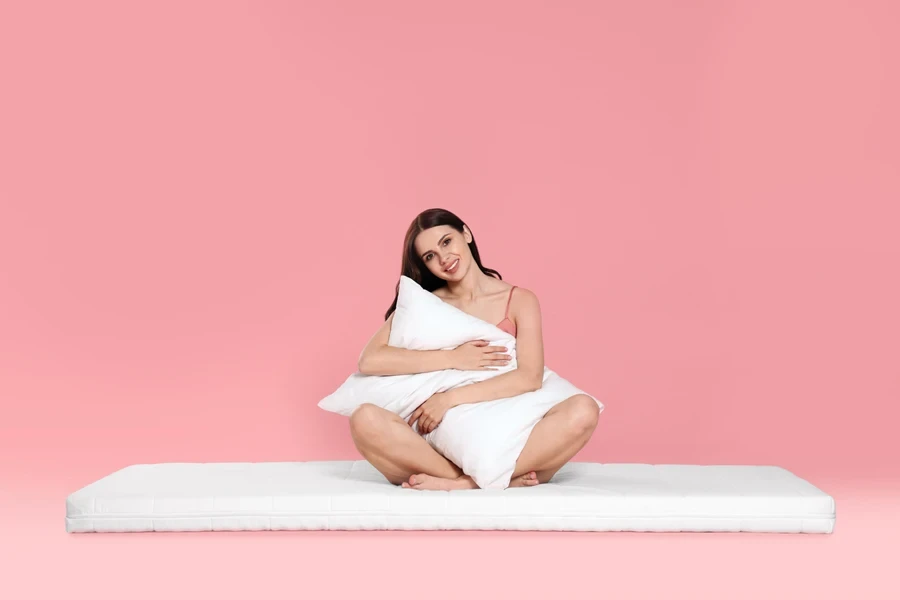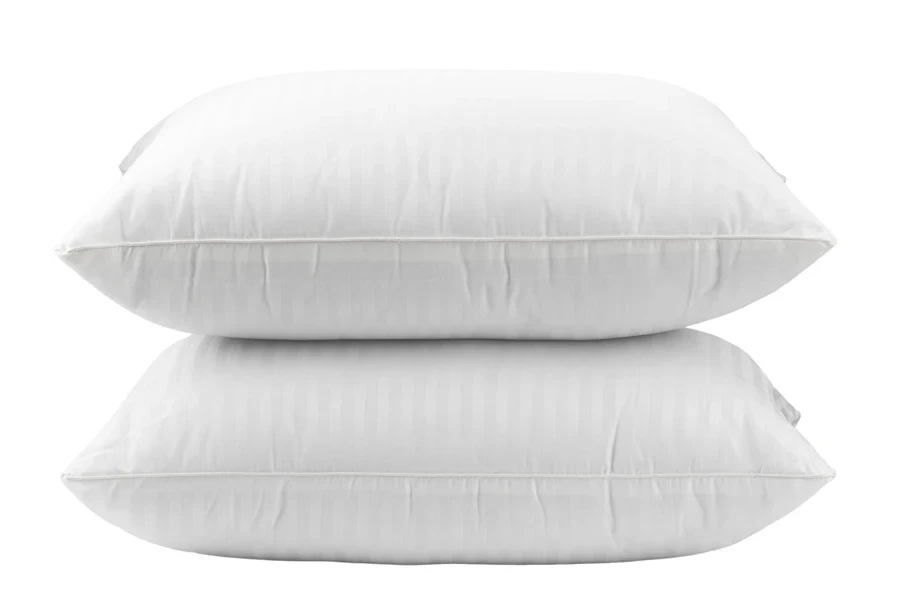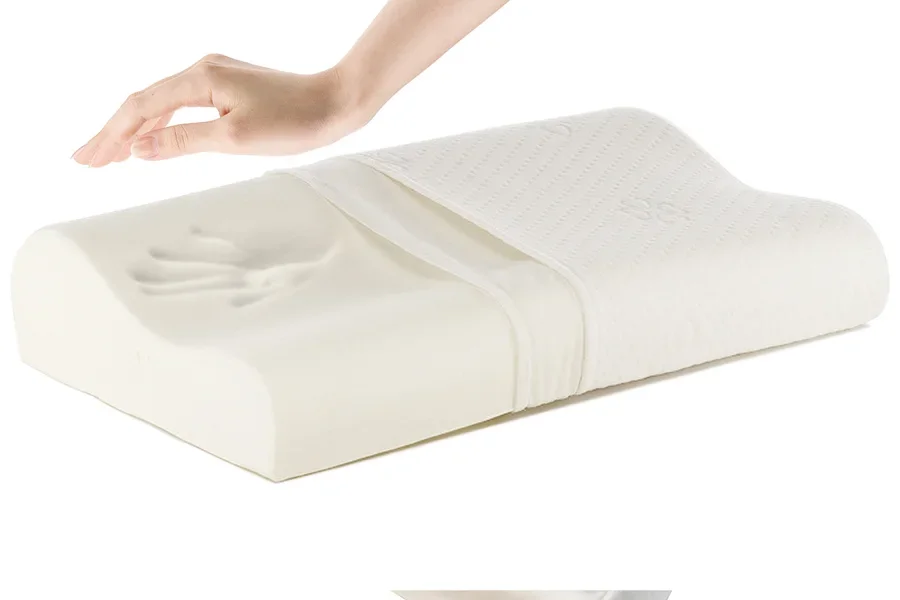On average, people spend a third of their lives sleeping. Restful sleep at night allows the body to fully recover strength and energy, so it’s crucial to do it with the best products available on the market: the mattress, linen, sleep masks, and, of course, the pillow.
The right pillow can improve your posture in bed and the quality of your rest. It enhances comfort and supports the whole spine by following the natural curvature of the head and neck. For this reason, many consumers worldwide choose to purchase an ergonomic pillow.
Ergonomic pillows can adapt to anyone’s sleeping position and reduce pressure on the muscles, which ensures a beneficial action on neck pain and muscle tension. In this article, retailers can understand why people buy ergonomic pillows and what characteristics they consider before choosing one model over another.
Table of Contents
Normal vs. ergonomic pillows
How consumers choose
The way they sleep
Height and density
The material
Final thoughts
Normal vs. ergonomic pillows

According to Verified Market Reports, the ergonomic pillow market is growing at a compound annual growth rate (CAGR) of 4.5% and will reach USD 13.26 Billion in 2031. Consumers are increasingly aware of the importance of sleep quality and spinal health, and they are ready to invest their money to buy the best pillow for themselves, as well as other high-quality, personalized sleep solutions.
Although they sometimes look the same, ergonomic pillows differ from traditional ones in several ways. Classic pillows feature a more or less thick rectangular shape and are not always compatible with individual needs. At the same time, an ergonomic option adapts to the customer’s natural body shape and sleep style, providing personalized support for the head, neck, and shoulders.
The materials used for ergonomic pillows are usually high quality and machine washable. In contrast, traditional pillows are often filled with synthetic materials, foam rubber, or feathers, which can cause allergies and do not offer the proper neck support.
Generic pillows may be cheaper, but they don’t always provide a good night’s sleep, especially for those suffering from backaches and other health conditions.
How consumers choose

A key aspect when choosing an ergonomic pillow is the consumer’s awareness of their sleeping position. Retailers can use this data to offer targeted advice and guide buyers toward the solution that best suits their needs. These details improve customer satisfaction and build loyalty in the relationship between seller and buyer, encouraging further purchases.
The way they sleep

When choosing an ergonomic pillow, many start by considering their sleeping position.
Sleeping on your back is the best position to keep the spine straight and reduce pressure on the back of the neck. However, back sleepers shouldn’t buy too high pillows because they may cause bad posture and pain. Amongst all the types of pillows, they should opt for an ergonomic one made of TEMPUR material or memory foam.
Side sleepers shouldn’t purchase pillows that raise only the area of their head and shoulders, in particular, to maintain the natural curvature of their body and provide relief to the spine.
Stomach sleepers often complain of back pain and tension in the neck area because they have to turn their heads and necks to breathe more easily during sleep. For this reason, the perfect pillow for this segment of consumers is one with lateral recesses that allow them to breathe normally.
Height and density

The ideal supportive pillow should be wide enough to adapt to the user’s shoulders to prevent their head from slipping to one side during sleep. This helps the entire spine remain in a natural and relaxed position all night.
Height is even more essential. If back sleepers use a pillow that is too low; their necks are in a curved position that compensates for that of the dorsal part of the spine, resulting in the stiffening of the muscles that support the head and leading to neck and shoulder pain after waking up. Similarly, a pillow that is too high would force the entire spine into an unnatural position that could cause the neck muscles to stiffen if maintained for so long.
On the contrary, when side sleepers choose a pillow that is too high or too low, their neck bends to the left or right, causing problems with the neck.
The height of the pillow is crucial, as is its density. If the pillow is too soft, the neck “sinks” into it, while if it is too rigid, the problem is reversed. In both cases, the cervical section of the spine is forced into an unnatural position.
The material

As already mentioned, people who suffer from asthma and allergies would never buy a pillow with goose feathers—they are comfortable but not washable and easily colonized by mites. Latex pillows represent a good compromise between comfort and hygiene. They are washable and anti-mite, but they can sometimes be excessively rigid for those who suffer from neck pain.
Microfiber pillows are probably the most modern and comfortable solution for a good night’s rest. Thanks to the weave of the threads and meshes, they allow the redistribution of weight to adapt to the natural curvature of the cervical region by lowering the pressure points to follow the shape of the user’s body and achieve proper spinal alignment.
The most sought-after and best ergonomic pillows are those made of “memory foam“: specially designed gels or particular latex foams that not only adapt to the shape of the head and neck of the person using them but even memorize it for a few seconds.
Final thoughts
Ergonomic pillows are not just a comfort product but a real investment in consumers’ quality of life. For retailers, offering this solution means responding to a growing demand for well-being, positioning themselves as experts in the sector, and increasing sales through innovative and personalized products.




